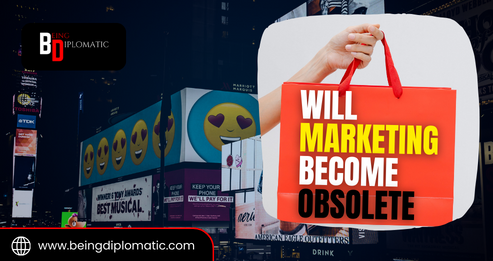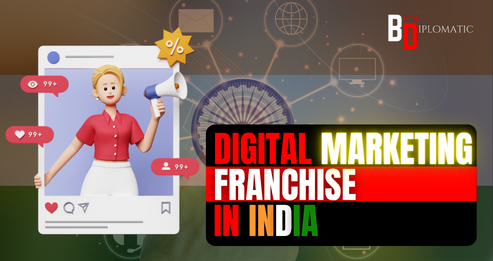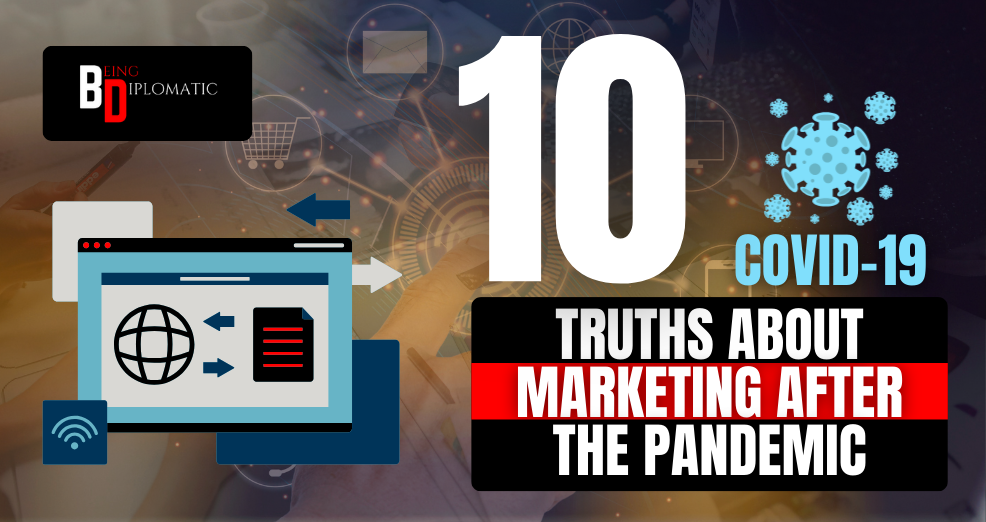
10 truths about marketing after the pandemic
Today we’re going to cover 10 truths about marketing after the pandemic.
The COVID-19 worldwide pandemic has changed the world a lot in many terms.
This includes, therefore, having a great impact on the way businesses are done.
So as not to get bothered with other aspects we’re going to cover our favorite aspect of the business.
So here are the 10 truths about marketing after the pandemic.
Let’s understand a scenario here:
The COVID-19 pandemic has highlighted and made people realize the need for marketing and branding.
In this article, we’ll cover the various aspects of the business and consumer.
As well as marketing point of view and how marketing has been affected post-pandemic.
So be ready to know all the 10 truths about marketing after the pandemic which have changed the way people do business.
This is not limited to a certain industry or a scale of business but widely all industries and various sizes of businesses.
All the 10 truths about marketing after the pandemic
Most of what we can see the area of changes in the marketing field after the pandemic is as:
- Market & Marketing Channels
- Consumer behaviour
- Role of advertising to Gen Z
- Growing D2C
- Relation with customer and Branding
- Segment and Niche Orientation
- Value Orientation & Purposive Marketing
- Customer involvement in Holistic Marketing
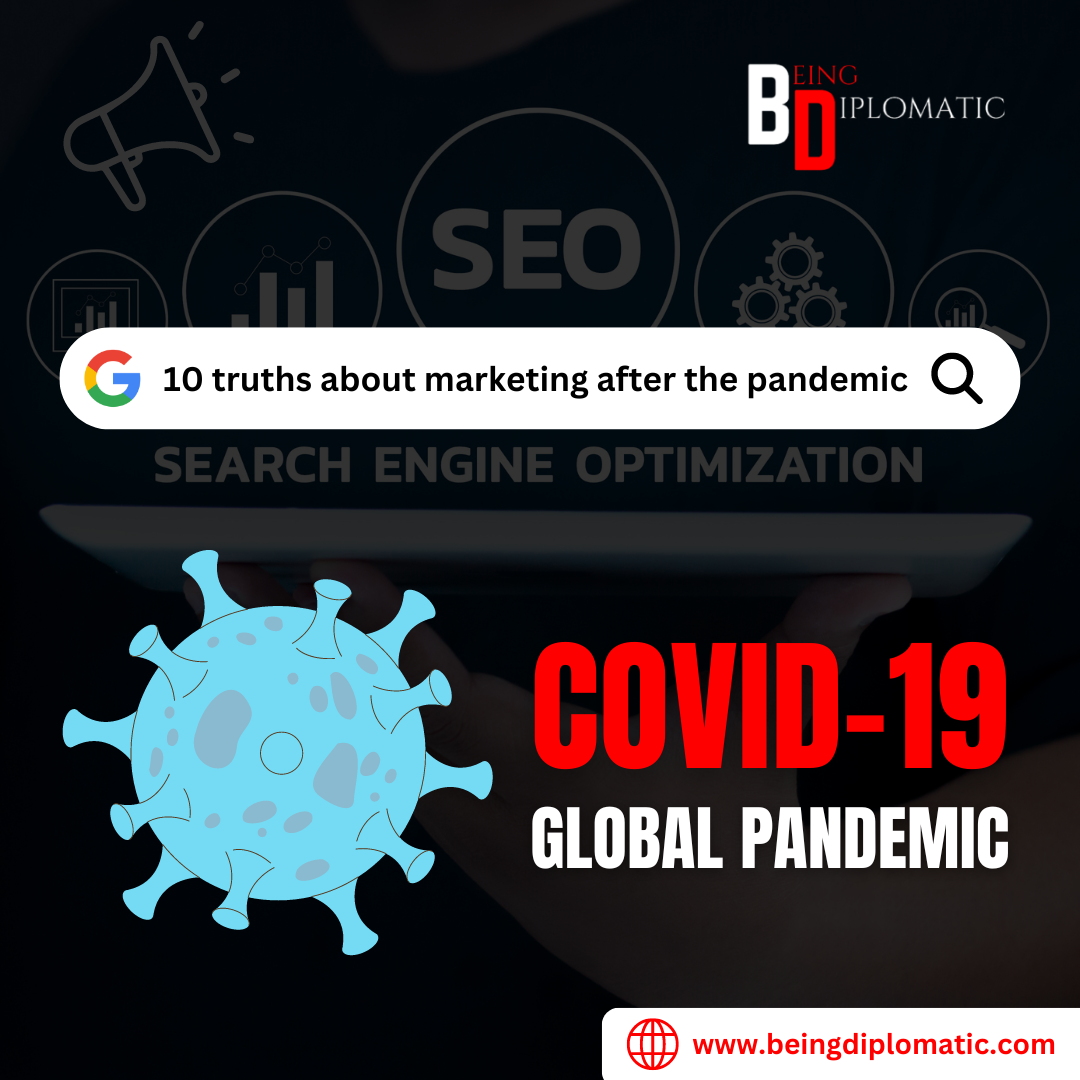
These are the major areas we can see the dynamic shift in marketing methods let’s cover them one by one in a manner that they are included in our article here in 10 Truths about Marketing after the Pandemic
1. Understanding Your Target Audience Initiates Marketing Strategy.
The COVID-19 pandemic has provided further evidence for what we already knew: businesses will need to target certain markets locally or in a way that is relevant to consumers’ needs. In other words, people will be observed throughout the nation, in each state, and even in the surrounding regions. It can also be feasible for some companies, such as banks, eateries, or retail stores, to carry out distinct marketing campaigns in each location.
2. Competing with Your Customer’s Previous Outstanding Experience
Before COVID-19, consumer demand was already rising. Since Generation Z has grown up with technology, it seems unreal to them. Because they are so adept at using our data, direct-to-consumer businesses (like Glossier or Parachute) have made it their habit to provide us with a more tailored experience.
However, with the arrival of Corona, the digital revolution proceeded apace. Customers are now even more optimistic about what businesses might accomplish for them in the digital experience as a result. The focus these days, according to Citi’s chief marketing Officer Carla Hassan, is more than just smooth digital transactions. Customers nowadays need a trip that is personalized to them and catered to their needs.
Businesses can use these strategies to satisfy the expanding needs of consumers.
Brand scores are now a crucial KPI for any company that interacts with customers. Rather than using legacy reports that only look at a certain time period, this can be accomplished by using real-time analytics.
Establish a data and technological base that is essential to the customer journey.
Every day, the objectives of many departments, such as marketing, sales, and customer service, should be in line with one another to ensure that the client is not neglected in the end.
Also Read: Amazon marketing strategy case study
3. Meeting Customer Expectations: Fulfilling Their Exact Needs
If this is the case, then B2C and B2B customer experiences will need to adopt new ways of thinking. People today demand their experiences to be seamless, sociable, pertinent, and interconnected. In other words, he just desires what he wants and gets it whenever he pleases. Furthermore, this implies that nobody should pay attention.
Businesses will need to make data and technology their primary values to produce such experiences.
Adding artificial intelligence or machine learning may also be necessary for this.
Since data enables us to produce experiences that are pertinent to the four Cs’ :
- Content (as in, emails and mobile apps don’t have any content).
- Commerce (including online and brick-and-mortar stores)
- Community (b2B buyers can access a virtual trade expo using it, and consumers can use it to get their products fixed by a webinar host).
- Convenience (offers savings and perks to customers who participate in the loyalty program)
The majority of businesses currently employ a “one-size-fits-all” approach to the 4Cs, but as customers demand greater customization, businesses will need to leverage more data and intelligence to help them make decisions more quickly. They can establish deeper personal ties with their brand to generate more meaningful experiences in encounters with individuals.
4. Customer Engagement: Drawing Parallels with Online Dating
Whether it is B2C or B2B, we will need to come up with fresh concepts for the human customer experience each time this occurs. Customers today need seamless experiences that anticipate their requirements, are timely, and relevant, and maintain a sense of connection. In essence, their goal is to obtain what they desire at the appropriate time.
Nobody paid attention to this in the middle either.
Businesses will need to integrate data and technology at their core to produce such experiences. This implies that artificial intelligence and machine learning might potentially be used. Since data enables us to produce experiences among the four Cs that are more pertinent:
Content (such as that seen in emails or mobile applications) Trade (such as online or brick-and-mortar retail, or both) Community (such as extending an invitation to B2B purchasers to attend an online trade expo or arranging a consumer webinar on home maintenance) Convenience (such as providing clients with coupons or loyalty program perks)
The majority of businesses currently employ a “one-size-fits-all” approach to the 4Cs, but as customers demand greater customization, businesses will need to leverage more data and intelligence to help them make decisions more quickly. They can establish deeper personal ties with their brand to generate more meaningful experiences in encounters with individuals.
Also Read: What is print marketing? All you need to know in 2024
5. Placing Customers at the Core of Your Customer Journey
Customer-centricity is not a novel notion. But politics, organizational structures, technological advancements, and geographic location frequently cause the functional silos that deal with consumers to become disjointed. The issue at hand is how to hide these internal divisions from the client, who believes that the entire organization is aware of them.
Everybody has phoned customer care and conversed with a call center representative or chatbot that was not using the same data as a physical store, and vice versa.
Keep in mind that a consumer relationship starts with marketing.
In B2C, for example, we interact with consumers, assist them in making purchases, and then work to win their loyalty so they will recommend us to others and allow us to close additional deals. Every step of the client experience should be taken into account by marketing, and all of these divisions should work together when at all feasible.
The idea that all departments that interact with customers should report to one location is incorrect. A simple structural change would not fix the issue.
More crucially, we must thoroughly examine the operational model and take into account personnel, process, technology, data, and KPIs to align departments with the demands of the customer in mind. Only then can we make this estimate. You’ll change accordingly.
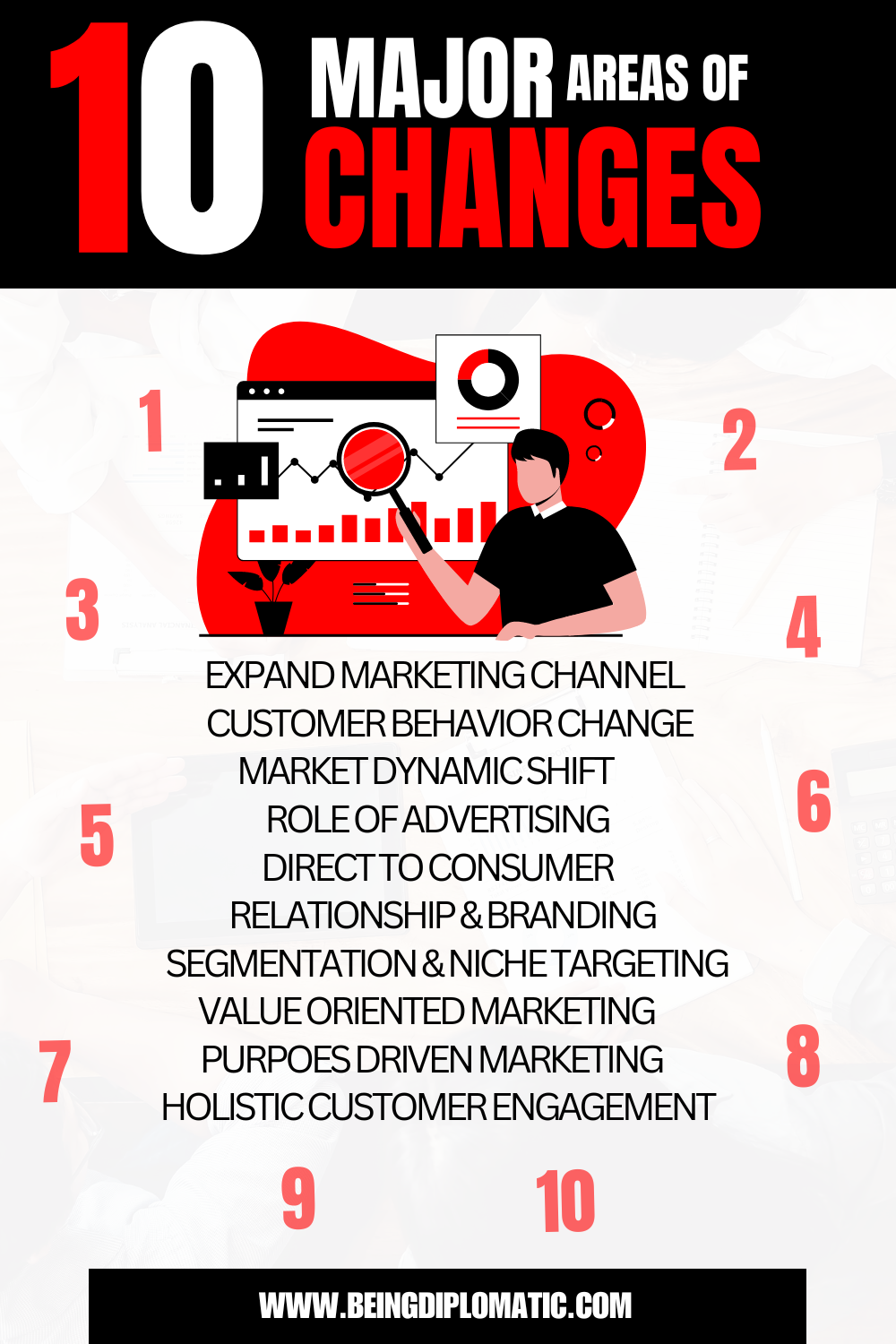
6. The Significance of Relationships
Developing relationships with consumers that are founded on trust goes without saying. After a brand is promised by advertising, its fulfillment must come from the product, service, and customer experience.
In B2B sales, in particular, Covid-19 has placed greater emphasis on building partnerships. After the pandemic, Teams with pre-existing relationships were able to sustain their earnings as everything moved online, and their bonds were solid.
Those who are skilled in selling solutions rather than items, on the other hand, are needed to acquire new clients.
Honesty and trustworthiness are critical for success in both situations. Hence, in this new world of online interactions, sales and marketing leaders in B2B companies need to hire individuals who are skilled at fostering connections.
This is because the world of online interactions is less about charm (and the world’s expense accounts) and more about insights and solutions. Which is worth more? People who listen to their customers’ issues and then provide solutions for them gain their trust.
In B2C transactions as well, confidence is crucial. The basis of the value exchange between the client and the business is this.
These days, businesses rely on customer data that they obtain with consent. Therefore, these businesses can develop more transparent privacy controls, foster even greater loyalty and distinctiveness, and ensure that data is safe in addition to having to abide by consumer privacy requirements. Customers may make better judgments and trust will grow if they are clear about the information they are giving to businesses.
Also Read: 5 Reasons Marketing will not become obsolete.
7. Embracing Agility: A Contemporary Marketing Approach
For years now, we have heard that agile cycles are preferable to sequential or linear “waterfall” techniques when it comes to technical development. Covid-19 started a marketing movement that will never go away: adopting a similarly agile mindset.
A corporation may discover as the crisis develops that its message was misinterpreted or that its supply chain was unable to meet demands, which would result in an instant crisis in public relations and/or advertising.
For example, picture an advertisement where individuals are gathered together and not exhibiting social distancing. All of the conventional approval dynamics became restrictive and long-lead time creative processes and annual budget cycles felt out of date.
The good thing that came out of the crisis was that it gave rise to a philosophy of marketing adaptability that will probably last forever.
This entails constant demand sensing and listening to customers, not just for marketing purposes but also to help the entire business grasp the general mood of the market. Operationally speaking, this translates to quicker decision-making processes and increased adaptability in crucial areas like media, budgeting, and creativity.
8. Embracing Strong Values: The Foundation of Your Brand
Brand loyalty has been rocked by the pandemic. According to the EY Future Consumer Index, up to 61% of customers are now evaluating white-label products—depending on the category—to the point that they will disregard well-known brands! This is not to mention that, in light of the social upheaval of 2020, customers have grown more vigilant. Brands ought to give careful consideration to their values in all of these areas.
Consumers still care about quality, affordability, and convenience, according to research, but they also now place greater value on sustainability, trust, ethical sourcing, and social responsibility. Marketing has the opportunity to educate the board and C-suite on the importance of brand values in the current market. When a brand’s tastes have drastically changed.
9. Achieving Modern Marketing Success: Balancing Factors, Including Your Tech Stack
With the proliferation of advertising and marketing technology, it has become effortless to concentrate on the so-called “tech stack” as the ultimate solution to revolutionize marketing.
But it’s not very useful to have a Ferrari that you can only drive 40 mph.
For your technology architecture to produce results, it must be complemented by a large enough data set to support its growth, the appropriate use cases to produce outcomes, and an appropriate strategy for human enablement.
Possibly the most crucial criterion is the latter one. Understanding how data and technology will be used throughout the company, ensuring that personnel are properly trained to use them, and putting the right measurement strategy in place to spur success and innovation are all part of human enablement.
Technology, data, human enablement, and use cases must all be balanced for marketing technology to yield the intended return on investment.
Also Read: Marketing is Everywhere! Discover How? and Why?
10. Elevating Marketing to the Core of the Full C-suite Growth Agenda
Naturally, prior marketing was merely a cost center that needed to generate a profit. During hard times, marketing suffered its first setback.
However, marketing gained a position in the C-suite during the pandemic. It now spearheads the customer journey, powers digital transformation, and serves as the voice of the customer. Everything about this is crucial. It will be hard to live in a society without a market in the future.
A work-in-a-week culture was established by Covid. Today, marketing has the opportunity to take the lead, innovate, and move the business ahead.
Conclusion for: 10 truths about marketing after the pandemic
According to the publication, COVID-19 has significantly altered marketing. Businesses will now need to engage in more digital marketing, where the customer experience and brand values will be crucial. Outdated marketing strategies are no longer effective; businesses must be data-driven and flexible.

